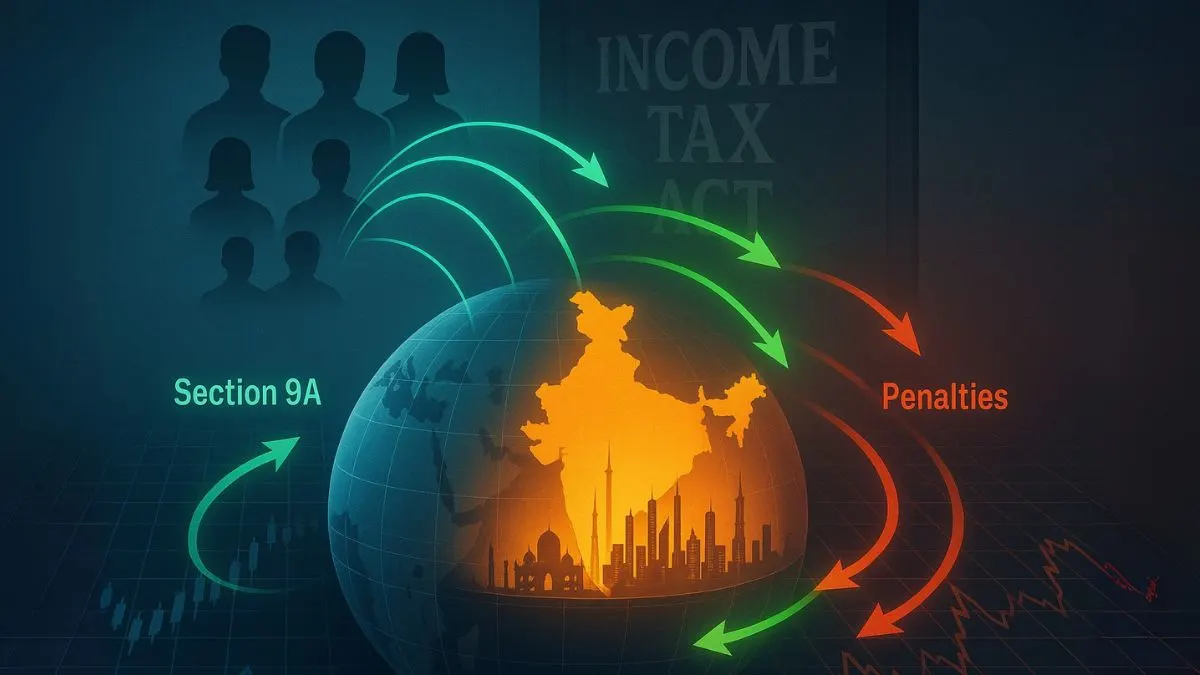
Tax laws are not just about revenue collection—they are also powerful tools for economic growth. One of the most significant examples of this is Section 80JJA of the Income Tax Act, which encourages businesses to expand their workforce. By rewarding employment generation, the government aims to boost job creation in the formal sector while helping employers reduce their tax liability.
This section is particularly important for businesses that are looking to grow & want to leverage legitimate tax deductions. Let’s break down what Section 80JJA means, who can benefit, and how businesses can use it effectively to reduce taxable income.
What is Section 80JJA of the Income Tax Act?
Section 80JJA is a provision under the Income Tax Act that offers tax deductions to employers who generate employment in the formal sector. It was introduced with the aim of encouraging companies to hire more workers by providing tax relief.
Simply put, if a company expands its workforce and incurs additional employee costs, the government rewards that effort through a deduction benefit. This not only helps businesses save money but also plays a key role in creating stable employment opportunities in the organized economy.
Core Benefit of Section 80JJA
The highlight of Section 80JJA is that it allows businesses to claim a tax deduction of 30% on the additional employee costs incurred. This deduction is available for three consecutive years from the year in which the additional employees are hired."
In other words, when a business recruits new staff, it can reduce its taxable income by 30% of the extra salary costs. This directly reduces tax liability & encourages sustained hiring in the years ahead.
Also Read: Tax Deduction on Employment of New Employees
Who Can Claim the Deduction?
Not all entities qualify under this section. The provision allows eligible businesses to claim a 30% deduction on additional employee recruitment costs if they meet the following conditions:
- The business must be engaged in manufacturing or production of goods.
- It should have earned gains or profit from its business activities in the relevant financial year.
- The deduction is available only on the additional employee cost, which means the cost over and above the existing workforce expenses.
- The new employees must be on the payroll & should meet the definition of “workman” under the law.
Additional Employee Cost – What Does it Mean?
To fully understand Section 80JJA, we must be clear about the term “additional employee cost.” It refers to the total cost incurred by the business in hiring new employees, such as salary, allowances, and other direct expenses.
For instance, if a company had 100 employees last year and this year it increased to 120 employees, the costs related to those 20 new employees qualify as additional employee costs. The business can then claim a deduction of 30% of the additional employee cost for three years.
Deduction Period and Impact
The deduction is not a one-time relief. Instead, it continues for three consecutive assessment years. This provides businesses with a long-term benefit and acts as a motivator to keep employees engaged rather than resorting to short-term hiring.
By reducing taxable income year after year, this provision gives companies a cushion to reinvest savings into further expansion, training programs, or technology adoption.
Also Read: Tax Deduction on Savings Account Interest Explained
Benefits for Businesses
Section 80JJA provides multiple benefits:
- Tax Relief: The provision offers tax deductions to businesses that have earned gains or profit, lowering their taxable income.
- Cash Flow Support: Saving on taxes improves liquidity & allows businesses to redirect funds into growth."
- Workforce Expansion: Encourages the formalization of employment by making permanent hires financially attractive.
- Competitive Advantage: Companies that actively expand their workforce enjoy both operational growth and tax benefits.
Thus, the section offers the facility for deducting the total income generated from the business, making compliance rewarding and beneficial.
Example to Understand Section 80JJA
Imagine a manufacturing company hires 50 additional employees in FY 2024–25, incurring an extra salary cost of ₹1 crore. Under Section 80JJA, the business can claim a 30% deduction, which equals ₹30 lakh.
This deduction will be available not only in FY 2024–25 but also for the next two financial years. Effectively, the company reduces its taxable income by ₹90 lakh over three years—while continuing to grow its workforce.
Conditions and Exceptions
While the section is lucrative, there are certain conditions & restrictions:
- Employees must be genuinely new hires and not transferred from another company.
- The deduction is not available if the new employees earn less than the prescribed minimum salary threshold.
- Businesses must maintain proper records & submit proof of additional employee cost.
These safeguards ensure that the benefit is used for genuine employment generation, not for manipulating workforce records.
Why Section 80JJA Matters for the Economy
India’s economy thrives on both small and large businesses creating jobs. With a young & growing population, employment generation remains a top priority for policymakers. By offering targeted incentives, the government ensures that companies expand their workforce and bring more people under the formal employment umbrella."
This not only benefits businesses through tax savings but also supports workers with job security, social benefits, and career growth.
Also Read: Claim Rent Deduction Even If You Do Not Get HRA
Future Outlook
As businesses increasingly adopt automation & technology, incentives like Section 80JJA will play a crucial role in balancing efficiency with employment. Going forward, the government may expand such provisions to cover more sectors & adapt to new forms of employment, ensuring both growth and inclusion.
Conclusion
Section 80JJA of the Income Tax Act is more than just a tax-saving tool. It is a strategic measure that aligns business growth with social development. By providing tax deductions to employers who generate employment in the formal sector, the law creates a win-win scenario for companies and the economy at large.
If your business is planning to expand, don’t miss the opportunity to claim a deduction of 30% of the additional employee cost for three years. It’s not just about saving tax—it’s about building a stronger foundation for growth.
✅ Want to maximize your tax benefits under Section 80JJA and other provisions? Visit Callmyca.com and connect with our experts who simplify tax laws & help you save smartly while growing your business.










